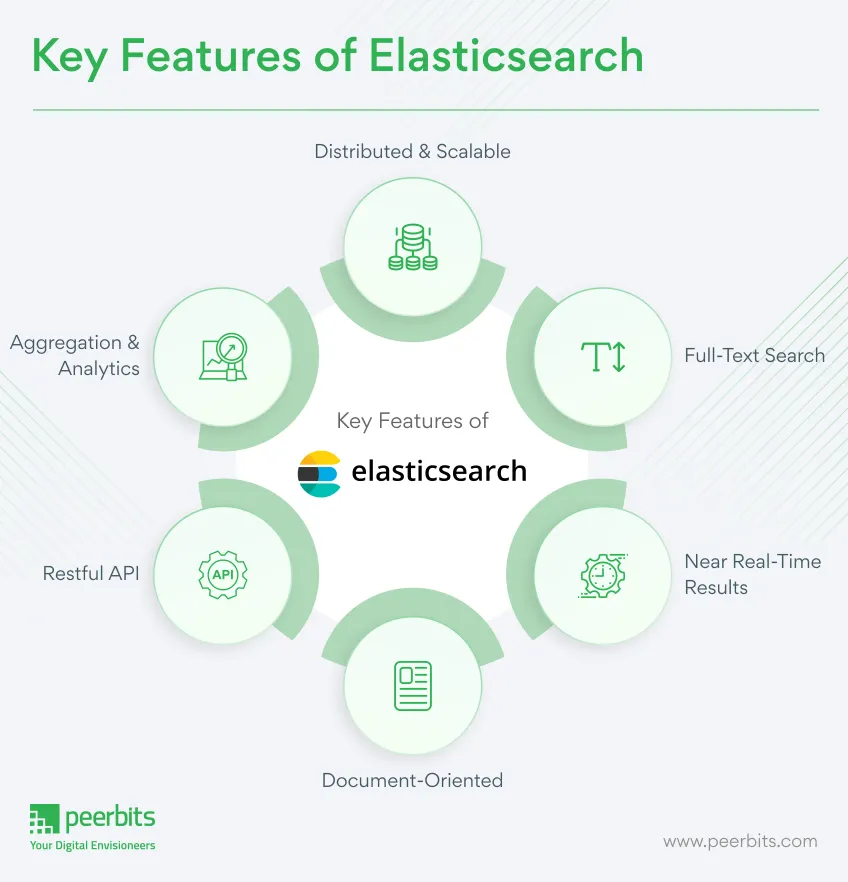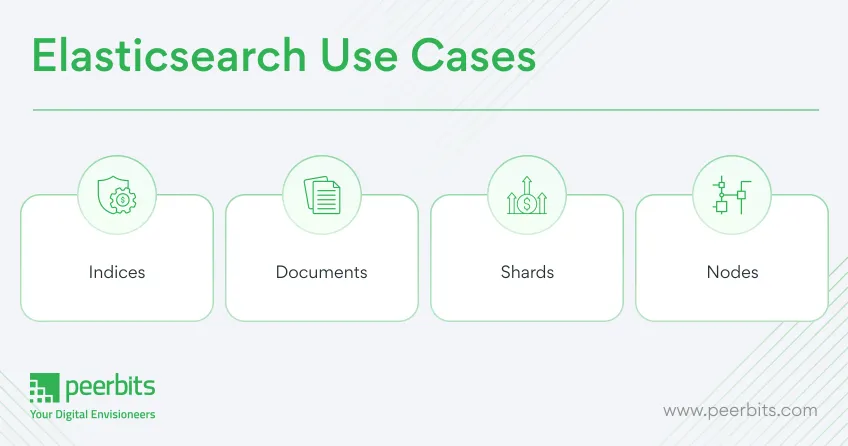When the question "What is Elasticsearch?" arises, responses vary. You may get answers like: it’s "an index," "a search engine," an "analytics database," "a big data solution," "fast and scalable," or "akin to Google." Depending on your familiarity, these descriptions might either clarify or further confuse you.
However, the reality is that all these answers are valid, contributing to Elasticsearch's multifaceted appeal. Over time, Elasticsearch and its surrounding components, collectively known as the "Elastic Stack," have evolved, serving diverse purposes—from basic website or document searches to log data collection and analysis, and even functioning as a business intelligence tool for data visualization and analysis.
What is Elasticsearch?
In the digital age, managing and extracting valuable insights from vast amounts of data is crucial. This necessity has given rise to powerful tools and platforms, among which Elasticsearch stands out as a leading force. Born from the need for efficient search capabilities, Elasticsearch has evolved into a versatile and robust solution used across various industries.
Elasticsearch, fundamentally an open-source, distributed search, and analytics engine layered atop Apache Lucene, excels in managing vast data volumes in real-time. Its standout features include lightning-speed search outcomes and sophisticated querying functionalities, making it a go-to solution for handling extensive data sets across diverse applications and industries.
The Foundation of Elasticsearch
Originally conceived by Shay Banon as a search engine for his wife’s recipes, Elasticsearch has undergone significant evolution. It forms the heart of the Elastic Stack, a suite of tools and products that complement and extend its functionalities. With its RESTful API, Elasticsearch offers a simple and intuitive way to interact with data.
Key Features and Capabilities
One of the fundamental strengths of Elasticsearch lies in its scalability and speed. Its distributed nature allows for horizontal scaling, accommodating growing data needs seamlessly. Additionally, its near real-time indexing capability ensures that data is available for search immediately after ingestion.

Elasticsearch's prowess extends beyond mere scalability and speed. Its distributed nature not only facilitates horizontal scaling but also ensures fault tolerance and high availability, minimizing the risk of data loss or system failure. Moreover, its sophisticated query DSL (Domain Specific Language) empowers users to craft intricate queries, enabling precise data retrieval and analysis.
The platform's agnostic approach towards data types and sources allows for seamless integration with diverse data formats, from structured to unstructured data, making it a versatile tool for handling a wide array of information. Additionally, its support for geospatial queries enables location-based search and analysis, catering to applications requiring geographical relevance.
Elasticsearch's robust security features, including role-based access control and encryption capabilities, fortify data protection, ensuring compliance with stringent security standards prevalent in the finance, healthcare, and government sectors.
Its extensibility through various APIs and compatibility with a multitude of programming languages simplifies integration into existing systems and workflows, facilitating a smoother transition for enterprises adopting Elasticsearch for their data management and analytics needs.
Applications of Elasticsearch in various sectors
Elasticsearch has found widespread adoption in various domains. From powering search functionalities on websites to analyzing log data, monitoring infrastructure, and serving as a cornerstone for business intelligence, its applications span diverse industries like e-commerce, finance, healthcare, and more.
Within the finance sector, Elasticsearch's real-time data analysis capabilities empower institutions to swiftly detect anomalies, mitigate risks, and drive informed investment decisions. Its role in fraud detection and prevention is pivotal, offering swift data retrieval to identify suspicious patterns across transactions.
In the healthcare landscape, Elasticsearch aids in streamlining vast amounts of medical data, facilitating efficient patient records management, and accelerating research through quick retrieval and analysis of medical records, clinical trials, and scholarly articles.
Moreover, in the realm of cybersecurity, Elasticsearch serves as a linchpin for analyzing system logs, detecting intrusions, and proactively monitoring network infrastructure, fortifying organizations against cyber threats.
Additionally, its integration with visualization tools like Kibana enables businesses to transform raw data into insightful visual representations, facilitating data-driven decision-making across industries ranging from marketing and advertising to supply chain management, enhancing operational efficiency and driving strategic growth initiatives.
How Does Elasticsearch Work?
Understanding the inner workings of Elasticsearch involves grasping concepts like indices, documents, shards, and nodes. The distributed nature of Elasticsearch enables data to be distributed across multiple nodes, enhancing performance and fault tolerance.
Elasticsearch Use Cases
Elasticsearch's functionality revolves around core components like indices, documents, shards, and nodes.

Indices
Elasticsearch organizes data into indices, which are collections of documents sharing similar characteristics. These indices facilitate efficient data storage and retrieval, allowing for categorization and segmentation based on various parameters.
Documents
Fundamental units within an index, documents represent individual data entries. Each document comprises structured or unstructured data, represented in JSON format, and contains attributes or fields for easy identification and querying.
Shards
Elasticsearch divides indices into smaller units called shards, which are individual segments of data. Sharding enables horizontal scaling by distributing data across multiple nodes, thereby enhancing performance, parallelizing operations, and accommodating large data volumes.
Nodes
The building blocks of an Elasticsearch cluster, nodes are individual instances that store data, execute queries, and participate in the distributed computing process. Nodes can be configured to perform various roles, such as data storage (data nodes), query execution (search nodes), or coordinating cluster operations (coordinating nodes).
The distributed architecture of Elasticsearch facilitates the automatic distribution of shards across multiple nodes, enabling parallel processing and fault tolerance. This design not only enhances performance by leveraging the collective computing power but also ensures data resilience and availability, as each shard is replicated across different nodes, minimizing the risk of data loss in case of node failure.
Elasticsearch's distributed nature and built-in mechanisms for data distribution and redundancy contribute to its scalability, fault tolerance, and efficiency in handling diverse workloads and large-scale data processing tasks.
How Peerbits can help you with Elasticsearch consulting service?
Peerbits offers exceptional Elasticsearch consulting service, and it also excels in providing tailored support and expertise in leveraging Elasticsearch to its fullest potential. Security is paramount, and Peerbits can implement robust security measures and access controls to safeguard your Elasticsearch environment and data against potential threats.
Firstly, their assistance often begins with the implementation phase. They'll guide you through setting up Elasticsearch within your infrastructure, ensuring that the installation is smooth, well-configured, and optimized to suit your specific use case. This foundational step lays the groundwork for a robust Elasticsearch system.
Following implementation, Peerbits specializes in customization. They understand that each business has unique needs. They can fine-tune Elasticsearch by creating custom mappings, integrating necessary plugins, or developing extensions to augment its functionalities, ensuring it perfectly aligns with your requirements.
Moreover, Peerbits is adept at performance optimization. They delve into the intricacies of Elasticsearch to analyze and fine-tune its performance. As data volumes grow or query complexities increase, they ensure that Elasticsearch operates efficiently, delivering swift and accurate search results.
Another area of expertise lies in advising on indexing strategies. Proper data indexing is crucial for search performance. Peerbits can offer guidance on indexing best practices, helping you structure and organize your data to maximize search efficiency.
Wrap Up
Elasticsearch has emerged as a cornerstone in the realm of data management and analysis. Its flexibility, speed, and scalability have made it indispensable across industries, empowering businesses to derive meaningful insights from their data.









